PCs with Pentium 4 processor are getting more and more unusable for everyday use.
But what if we doubled the processing power?
Introduction:
In this article we will be using Debian to evaluate day-to-day usability of a dual-processor “Pentium 4” system.
As a continuation of Dell PowerEdge 2850: iSCSI on a 2003 server we will evaluate if simply doubling the processing power of an older system by having two processors run in unism can replace a more modern solution.
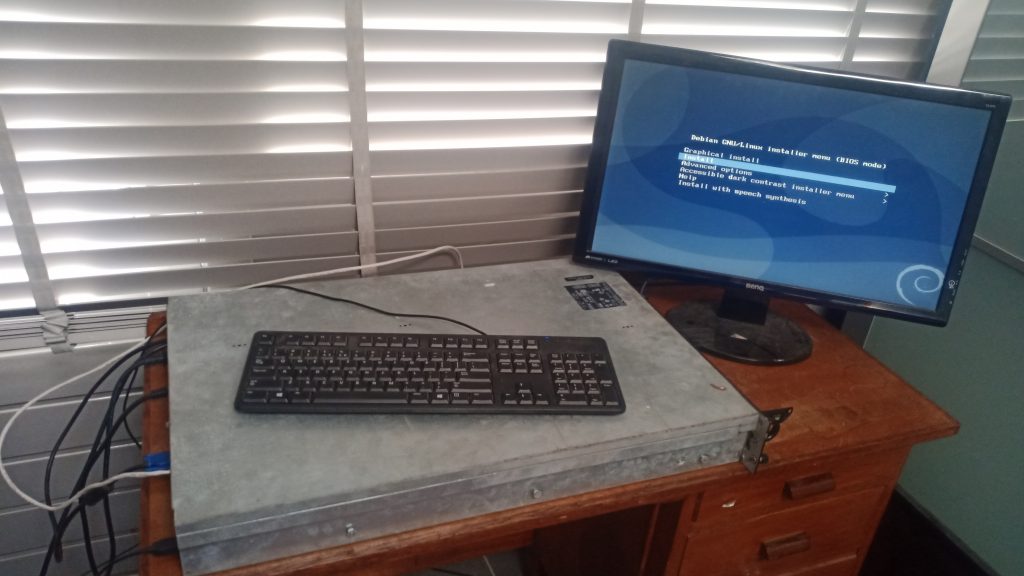
This is a Dell PowerEdge 2850, a rack mount server from 2004.
It has two Pentium 4-architecture processors running at 3.4Ghz and 1GB of memory.
Due to the memory size, we will be installing Debian and connecting to it remotely.
Installation:
For ease of use you can burn a CD with Debian Netinstall for ease of use or write an USB stick with Debians installation image (ISO file) using software like Rufus.
To boot from an USB stick, in the system’s BIOS (Press F2 when starting) go to _______, use + and – to chasnge the order where you should now have Hard Disk as number 1, and then below that in ______ move “Hardware Emulated USB Hard Disk” to number 1. You can now boot from USB sticks!
Software setup:
For a full rundown of Debians text-mode setup: Look here. The following is for the things we want to change:
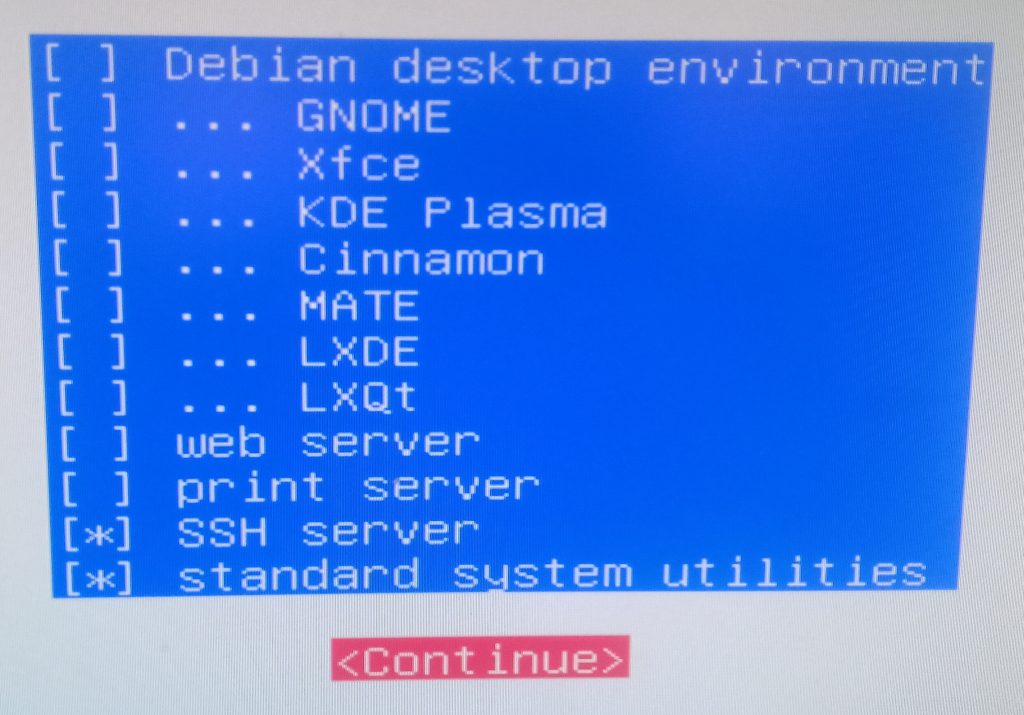
After partitioning your disks and the system has installed its base packages, tasksel will pop up.
Select only the standard system utilities and SSH, as we will use SSH to remote into the system for easier installation later on.
After this completes setup will ask you to install GRUB, which is what starts Linux on your system. Select /dev/sda and press OK. Setup will complete itself, and you are done!
Now that Debian is installed, continue out of the setup and remove the CD or USB stick. Now Debian should start naturally and you will be greeted with the login prompt.
SSH login:
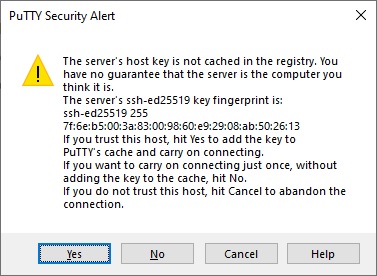
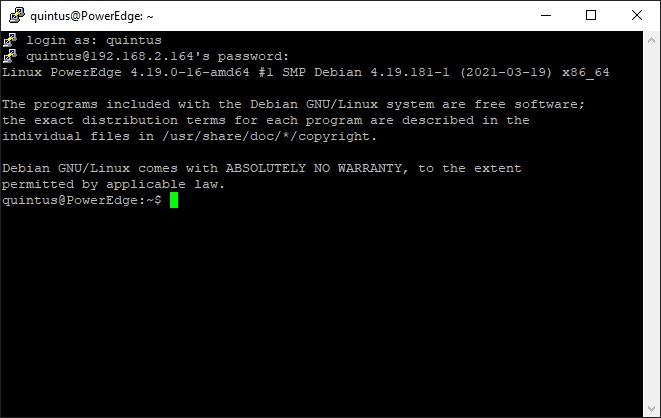
We will now look at your IP address, so login with the root account and the password that you chose in setup. Enter “ip a” and note your IP address. It probably looks like 192.xxx.xxx.xxx or 10.xxx.xxx.xxx.
Return to your main PC, install PuTTY (shown above) if needed and open it. Enter the IP address your Dell PowerEdge showed and you should see another login prompt.
Tip: You can copy text in Windows and paste it into PuTTY via your right mouse button.
Fixing root permissions with sudo:
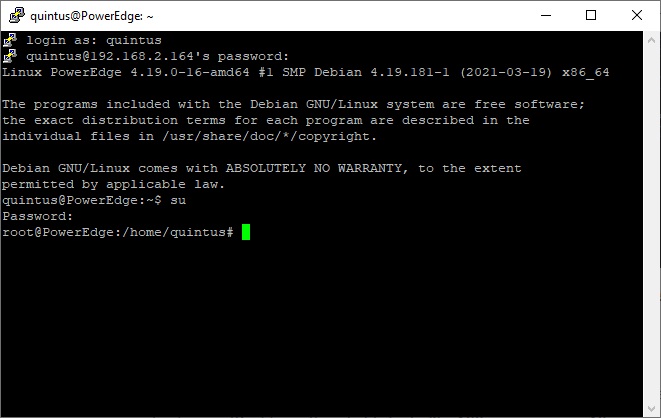
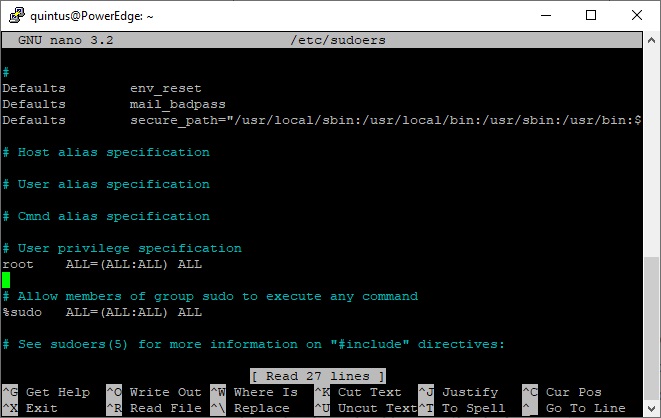
Now, root will not login on this directly, instead, use the password and username of your other account. This is usually your real name and password, see screenshot 3. (setup also asked for this.)
Enter “su” and then the password of your root account. First we will install the sudo package, run “apt install sudo”, enter Y when it asks for confirmation and let it finish.
Now run “nano /etc/sudoers”. You will be greeted with a text editor and an open file (see screenshot 4).
Scroll down via the arrow keys until you end up at the line under “root ALL=(ALL:ALL) ALL”.
Type in your username and add the “ALL=(ALL:ALL) ALL” text behind it. Exit via Ctrl+X and press y to save.
You can now exit the root command prompt via “exit”, as all commands that need root can be run via your own account. Simply add sudo in the front of any command and done!
Debite installation script:
To perform the last piece of the installation, we will use Debite. An easy script I made to install various software.
First you have to install git. Run “sudo apt install -y git” in your shell. Then, run “git clone https://github.com/DutchComputerKid/Debite”.
Now do a “cd Debite” to change into the newly made folder, and lastly run “chmod +x debite.sh” to make it executable.
Now we will use Debite and install LXDE and a remote desktop server.
I personally like LXDE for its low memory usage, so we can install a minimal version of it via “sudo apt install lxde-core –no-install-recommends”
This will install a minimal version of LXDE, seen we only have 1GB of memory in this system we want to make sure we use as little as possible.
Now to install our remote desktop server, You can enter “sudo ./debite.sh 23” to quickly and easily select it and install everything it needs. If it asks if you want to install XRDP, all is well and enter “1” to continue. Wait for it to finish as it may take some time to install.
After the script finishes, reboot your system and we can now try to connect to the desktop!
Connecting to the system:
Now that we have our setup complete to use, we will now login via Remote Desktop.
Open Remote Desktop on your PC and enter the IP address we used earlier. You should see the following:
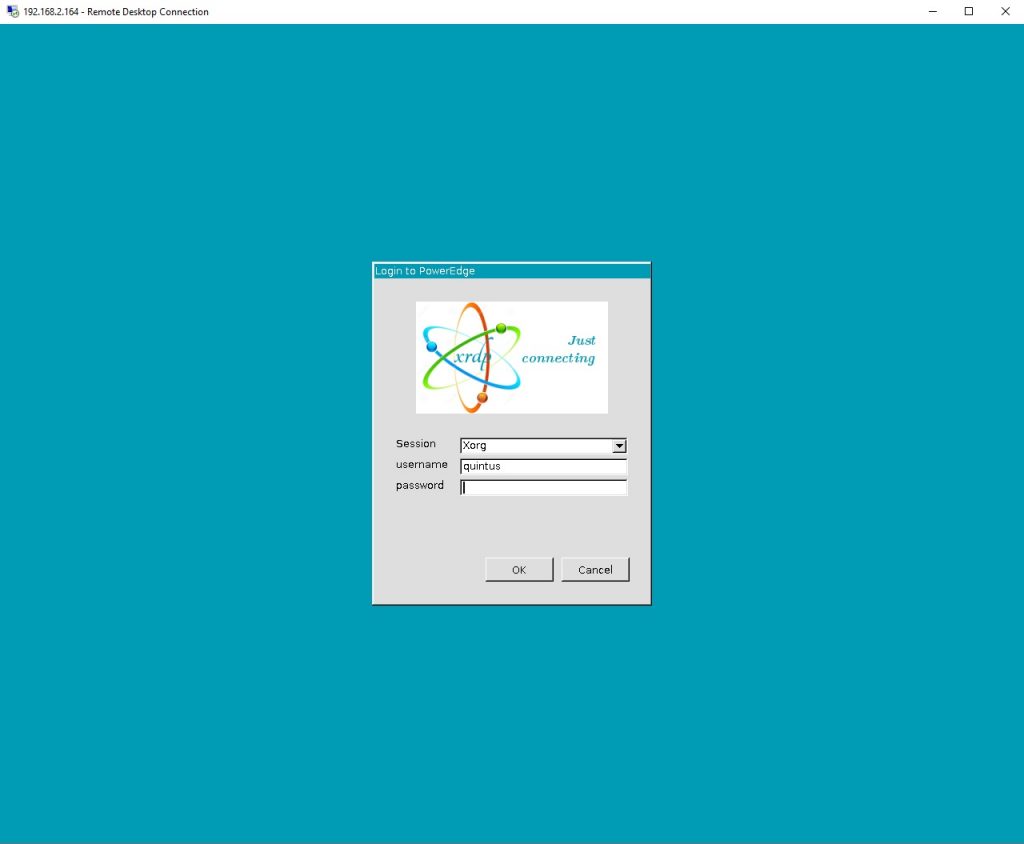
If you do, congratulations! You have successfully installed remote desktop on your old server. Login via your own usename and password, then wait while the system logs you into the desktop. Only a taskbar will show up, but that’s on purpose!
Go to the ‘Start menu’, System Tools and then xTerm. I personally like lxterminal much better to do “sudo apt install lxterminal”. Close xTerm and open LXTerminal in the System Tools folder.
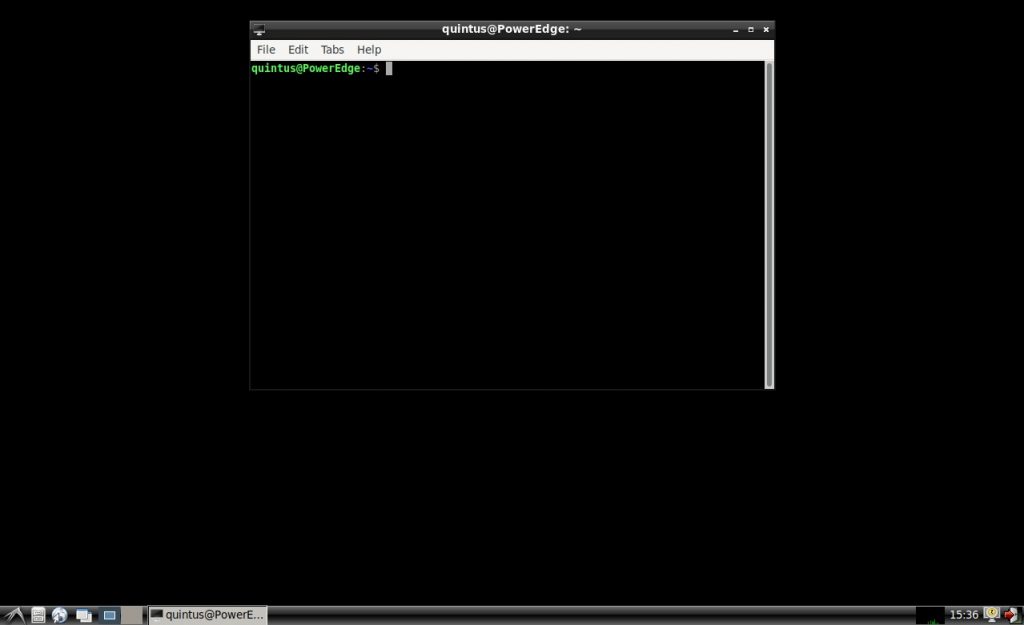
Now you may install your browser of choice like Google Chrome (you can use Debite to do that easily) or Firefox, which could not be any simpler. “sudo apt install firefox-esr” (esr stands for Extended Support Release) and off you go!
Firefox speed tests:
Now that we have a fully working environment, we can finally evaluate if our beginning statement holds up.
Does coubling a Pentium 4 make it usable again? Let’s find out.
Benchmarks:
For techinal performance results we will use browserbench.org, as its three test should give a theoretical idea how the system holds up today.
Modern system:
- Speedometer: 82.3
- JetStream2: 74.665
Dell PowerEdge:
- Speedometer: 11.9
- JetStream2: 18.013
17 years older, and 75% to 85% slower in systematic tests! That doesn’t look good for the old thing. But what about normal browsing, really?
Note: MotionMark was not used due to the PowerEdge not running on any accelerated graphics.
Normal browsing:
Things like GMail take a couple seconds to load of course and so does Facebook, but in my small day of using the system remotely it really is not all that bad! Having double the power certainly helps with spikes and other then the remote desktop delays it remains quite snappy.
Don’t forget though, only having 1GB of memory really hinders performance. Having say, 2GB would helps heaps with multiple tabs or big websites like Facebook.
For YouTube I did not want to use Remote Desktop, as the delay per frame was just too big to handle. This is due to the network but also the fact that sending images/frames with high detail like a video requires a LOT more work then a simple mail client.
But due to the Dell’s old Radeon 7000 (Not HD 7000) LXDE would not open a session and installing the firmware-amd-graphics package broke Debian. Sadly, with the built-in graphics it is not really a viable option to use the screen output.
I would recommend buying a graphics card that can work in the PCI-X slots, and testing further using that.
Shame that it does not have AGP slots. otherwise you could make it a kick-ass 2004 gaming system! Add a fast graphics, burn Windows XP on a CD and off you go!
Downsides to this system:
No system is without its downsides, and a server of this retro has quite important downsides:
- Power Draw
This huge system has two 750 watt power supplies, and the system can easily eat 400 watts or more under load.
Comparing that to my entire setup that only eats 100 idle, while this Dell eats 280 it would get at least 3x more expensive to run this system, then to buy something else. - Noise
With the fact that it remains a server means that it gets LOUD. Each fan draws around 15 watts on its own, and there are a total of 6 in the system. Turning it on is going to get your family quite annoyed fast or the age old comment “What is this jet engine noise all the time!?” - Storage:
SCSI drives are getting quite espensive, and ensuring your data is safe on these drives I do count it as a MUST to set up a RAID, to keep your data safer in case one drive fails.
Conclusion:
If you really need to use a system like this, where it has two Xeons of this age, it is not all too bad!
My recommendations would be to get some more RAM (I’ve seen 8GB kits for as low at 20 euro), and maybe a better graphics solution if remote desktop is not to your liking.
Browsing works decently, and there is more then enough horsepower for basic work like Excel or Word-like projects.
Would I recommend you do this? No of course not, only if you really must or are just curious how far we’ve come in computing performance and efficiency.
With that said, I hope you can get even more out of your old Servers as emergency computers, or a network attached storage device like shown in Dell PowerEdge 2850: iSCSI on a 2003 server.
Thanks for reading and hope you enjoyed!
